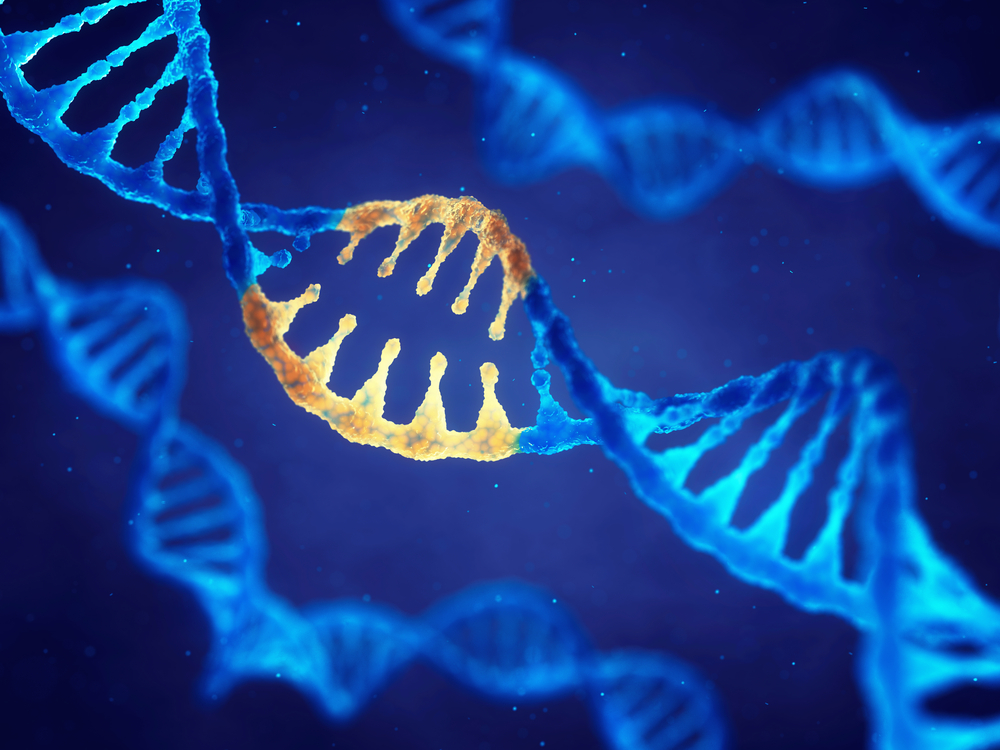New Tissue-specific Delivery of CRISPR/Cas9 Aided by Moth Virus and Magnets, Study Shows
Written by |

Rice University researchers are using a virus that infects moths and magnetic nanoparticles to develop a new vehicle for the delivery of CRISPR/Cas9, a genome-editing tool, with high efficiency and tissue specificity in vivo.
CRISPR/Cas9 has gained attention as a potential tool to correct genetic defects linked to diseases such as cystic fibrosis (CF).
The new approach was described in the study, “Spatial control of in vivo CRISPR–Cas9 genome editing via nanomagnets,” published in the journal Nature Biomedical Engineering.
CRISPR/Cas9, a system used by microbes to defend themselves against invading viruses, has been adapted and is currently at the forefront of many therapeutics for human diseases. The technique allows for the correction of genomic defects associated, for example, with several human genetic diseases, including CF, sickle cell disease, and muscular dystrophy.
However, its application to humans is still hampered by several barriers, one of which is how to deliver the CRISPR/Cas9 genome editing machinery with high efficiency and precision, i.e., to the right cells. The most common delivery methods rely on the use of viral vectors.
“Efficiently delivering genome-editing machinery into target tissue in the body with spatial control remains a major challenge,” Gang Bao, PhD, a bioengineer at Rice University and the study’s lead author, said in a press release. “Even if you inject the viral vector locally, it can leak to other tissues and organs, and that could be dangerous.”
Bao’s team decided to use as a delivery vector the baculovirus, which infects a moth native to North America called Autographa californica, most commonly known as the alfalfa looper.
The baculovirus vector is relatively large, meaning it can transport multiple functional CRISPR/Cas9 units to a target cell. Moreover, since it doesn’t affect humans, the baculovirus is safer to control, limiting the risk of undesired effects, as opposed to using viruses originating from humans or other mammals, such as adenoviruses.
The team attached these viral vectors to magnetic nanoparticles, specifically iron oxide nanoparticles.
This concept stemmed from a previous study by Bao’s team in which they used the magnetic nanoparticles and an applied magnetic field to increase the permeability — or ability to allow large molecules to pass — of the walls of blood vessels. The study, published in the journal Nature Communications in 2017, was titled “Magnetic forces enable controlled drug delivery by disrupting endothelial cell-cell junctions.”
Here, the researchers used the same principle, but this time the magnetic nanoparticles were used to activate the viral vector in vivo at specific locations through the induction of a magnetic field, allowing them to control the delivery of the CRISPR/Cas9 machinery.
“We really didn’t know if this would work for gene editing or not, but we thought, ‘worth a shot,’ ” Bao said.
However, the researchers had to overcome yet another roadblock in the in vivo administration of the baculovirus — their targeting and destruction by the complement system, a key component of the immune system.
They found that coupling the magnetic particles to the baculovirus inactivated the immune system and, under a magnetic field, restored the activation of the virus.
“If we combine BV [baculovirus] with magnetic nanoparticles, we can overcome this deactivation by applying the magnetic field,” Bao said. “The beauty is that when we deliver it, gene editing occurs only at the tissue, or the part of the tissue, where we apply the magnetic field.”
According to the researchers, this means that the initially inactivated baculovirus vector works as an “off” switch, limiting its undesired systemic (whole body) effects, and that the application of a magnetic field serves as an “on” switch, activating the genome-editing machinery and restricting the delivery of the CRISPR/Cas9 system to the intended tissue.
Researchers confirmed these findings by loading the baculovirus vector with a reporter protein, either a green fluorescent or firefly’s luciferase (a fluorescent marker). By following the glowing cells, they confirmed that applying a magnetic field resulted in targeted delivery of the genome-editing machinery both in cells grown in the lab and in mice.
While other viruses, such as adenoviruses, are currently one of the main tools being explored to deliver the CRISPR/Cas9 system, “we expect that magnetic activation of baculoviral vector can enable selective in vivo genome editing in the tissue exposed to the applied magnetic field,” the team concluded in the study.
It will be necessary, however, to further improve the efficiency of this new viral delivery system, Bao added.






